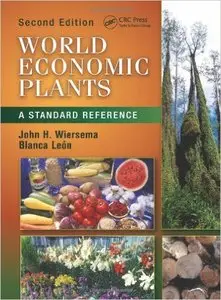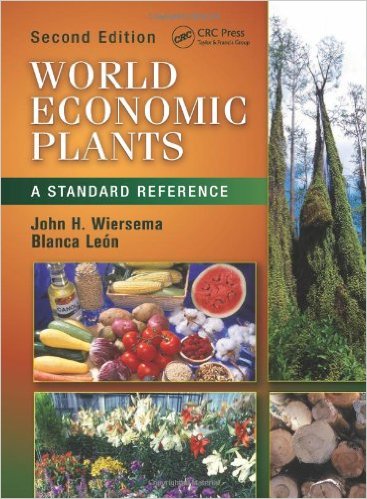John H. Wiersema, Blanca León, "World Economic Plants: A Standard Reference, Second Edition"
English | ISBN: 1439821429 | 2013 | 1336 pages | PDF | 359 MB
English | ISBN: 1439821429 | 2013 | 1336 pages | PDF | 359 MB
Given the frequent movement of commercial plants outside their native location, the consistent and standard use of plant names for proper identification and communication has become increasingly important. This second edition of World Economic Plants: A Standard Reference is a key tool in the maintenance of standards for the basic science underlying the quest for security of food and other economic plant resources. Containing a substantial increase in content from the previous edition, this comprehensive and accessible work now documents more than 12,000 economically important vascular plants.
This volume covers plants and plant products that are traded, regulated, or otherwise important to international commerce. The plant names and uses have been meticulously checked against the literature and by external peer reviewers, and names are up to date in their taxonomic classification and nomenclaturally correct according to international rules. Each entry includes the accepted scientific (Latin) name, synonyms, economic importance, common names in a variety of languages, and the geographical distribution of the species. The information on each plant can be accessed through either its scientific or common name, providing a global perspective on its native, introduced, or cultivated geographical distribution, and its economic usage or impacts.
This reference covers all major groups of economic plants, including those used for human or animal food, materials, medicines, environmental purposes, gene sources for breeding, social purposes, as well as ones with negative impacts such as poisonous or disease-harboring plants or weeds. This compilation provides scientists, professionals, and students from various backgrounds with a global standard for communication regarding economically important plants. As collaboration across plant science increases, comprehensive standardized references such as this one are indispensible for addressing the global issues involved with agriculture and other human uses of plant diversity.
New this edition:
Includes over 25 percent more economic plants—approximately 2,700 new plants
Comprises twice the data content of the first edition
Contains more than 50,000 common names in all principal world languages, now including some in their original scripts



